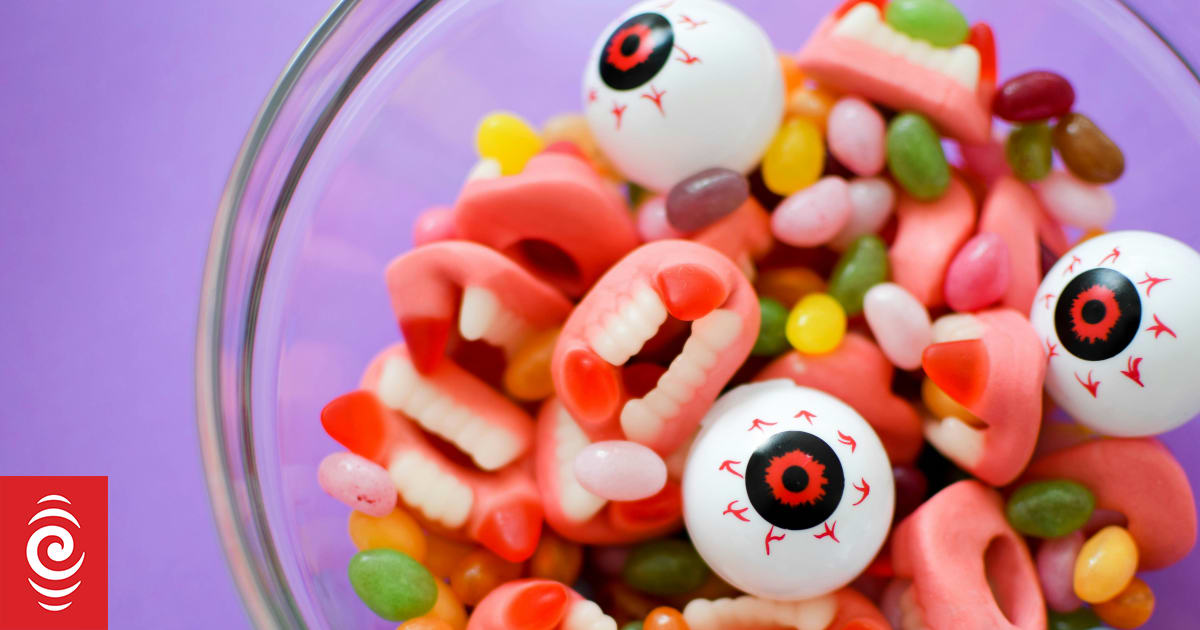World
Halloween Treats and Sleep: How to Manage Sugar Effects

Halloween is celebrated on October 31, and with its rising popularity, many families are gearing up for a night filled with costumes and trick-or-treating. While children revel in the excitement, they are also likely to consume a significant amount of sugary and ultra-processed treats. Understanding how these foods can impact sleep is crucial for parents aiming to ensure their children get adequate rest after the festivities.
Research conducted by Charlotte Gupta, a sleep researcher at the Appleton Institute, part of the HealthWise Research Group at CQUniversity Australia, highlights the physiological effects of sugar and ultra-processed foods on children’s sleep patterns. When children consume sugary treats, their blood sugar levels spike rapidly, leading to a temporary surge in energy. This spike is typically followed by a drop in energy, often referred to as a “sugar crash,” which can occur roughly 60 minutes after consumption.
Despite popular belief, the notion of a “sugar rush” causing hyperactivity in children is largely a myth. Gupta’s research suggests that the excitement associated with Halloween activities, such as trick-or-treating, is more likely to contribute to increased energy levels than the treats themselves. The adrenaline and cortisol released during these thrilling experiences can make it challenging for children to settle down, affecting their ability to sleep.
Several factors compound this issue on Halloween night. Extended playtime and exposure to bright lights can delay the release of melatonin, the hormone responsible for regulating sleep. Consequently, children may find it difficult to wind down as their bodies remain in a heightened state of alertness. Additionally, consuming sugary treats close to bedtime can further disrupt sleep quality. A rapid increase in blood sugar followed by a sharp decline can lead to nighttime awakenings, as well as increased thirst and bathroom visits due to dehydration.
Understanding these dynamics can help parents manage their children’s Halloween experiences more effectively. Here are some strategies to ensure that kids enjoy their treats while minimizing sleep disruptions:
Timing and Routine Matter
Encouraging children to consume treats earlier in the evening is essential. Parents should aim to avoid any sugary or ultra-processed foods within three hours of bedtime. Ensuring that children have a balanced dinner—including carbohydrates, protein, and healthy fats—can help slow sugar absorption, reducing the risk of rapid blood sugar spikes.
Maintaining consistent bedtime routines is also vital. Sticking to familiar activities like a warm bath, brushing teeth, or reading a story can signal to the body that it is time to relax. This familiarity can help counter the excitement of Halloween and support a smoother transition to sleep.
Hydration and Managing Leftovers
It is important to encourage hydration, but parents should be mindful to limit the amount of water children drink before bed. A small glass can help combat dehydration from sugary treats without increasing the likelihood of nighttime trips to the bathroom.
Once the Halloween festivities are over, managing leftover sweets is crucial. Parents should consider how to handle excess candy to avoid prolonged periods of high sugar intake. Spreading out treats over several days can mitigate the risk of continued disruptions to sleep patterns.
Gentle physical activities, such as yoga or light stretching, can also be beneficial. While vigorous play can keep kids energized, calming activities may help them release pent-up energy in a more manageable way.
By understanding the effects of sugar and maintaining consistent routines, parents can help their children enjoy the Halloween festivities while still prioritizing a good night’s sleep. This approach not only benefits the children but also creates a more restful environment for parents on what can be a chaotic night.
-

 Sports2 months ago
Sports2 months agoNetball New Zealand Stands Down Dame Noeline Taurua for Series
-

 Entertainment2 months ago
Entertainment2 months agoTributes Pour In for Lachlan Rofe, Reality Star, Dead at 47
-

 Entertainment2 weeks ago
Entertainment2 weeks agoNew ‘Maverick’ Chaser Joins Beat the Chasers Season Finale
-

 Sports2 months ago
Sports2 months agoSilver Ferns Legend Laura Langman Criticizes Team’s Attitude
-

 Politics3 weeks ago
Politics3 weeks agoNetball NZ Calls for Respect Amid Dame Taurua’s Standoff
-

 Entertainment2 months ago
Entertainment2 months agoKhloe Kardashian Embraces Innovative Stem Cell Therapy in Mexico
-

 Sports2 months ago
Sports2 months agoGaël Monfils Set to Defend ASB Classic Title in January 2026
-

 World3 months ago
World3 months agoPolice Arrest Multiple Individuals During Funeral for Zain Taikato-Fox
-

 Entertainment4 weeks ago
Entertainment4 weeks agoTyson Fury’s Daughter Venezuela Gets Engaged at Birthday Bash
-

 Sports4 weeks ago
Sports4 weeks agoHeather McMahan Steps Down as Ryder Cup Host After Controversy
-

 Entertainment4 weeks ago
Entertainment4 weeks agoTyson Fury’s Daughter Venezuela Gets Engaged at Birthday Bash
-

 World4 weeks ago
World4 weeks agoNew Zealand Firefighters Plan Strike on October 17 Over Pay Disputes











